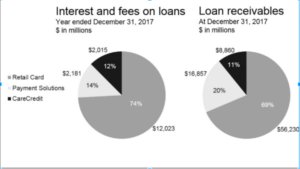- Wendy’s opportunity lies in the International markets
- Wendy’s Capital Allocation Program dooms the future of Wendy’s performance
- The domestic market is Competitive, and Wendy will cede market share to smaller more versatile companies
Wendy’s is the sixth largest QSR business in the United States with systemwide sales exceeding nine billion dollars and global systemwide sales of more than ten billion dollars. Wendy’s International Franchised stores made only a sliver of these sales with 477 million dollars. In addition, by 2020 the international franchised restaurant industry is expected to be worth $5 trillion.
While there are certainly challenges to overcome in the domestic markets the opportunity international markets provide the company will outweigh the loss of any market share in the domestic arena.
The book Good to great underlines some key aspects a great company needs to have. Applying these concepts from the book to Wendy’s provides a few key indicators to look for. One of the themes throughout the book was the idea that management must be superb. The common thread linking great management is their continued involvement within the corporation and their loyalty towards their company. These types of leaders are required to improve existing parts of the company or a new endeavor. Abigail Pringle, the head of international development at Wendy’s, is a long-time company insider
Ms. Pringle joined the Company in May 2002 and has served as our Chief Development Officer since December 2014. She served as our Senior Vice President of Restaurant Development and Growth Initiatives from July 2013 to December 2014, Senior Vice President of Strategic Initiatives and Planning from April 2012 to June 2013, Vice President of Strategic Initiatives and Planning from November 2008 to March 2012 and Director of Strategic Initiatives and Planning from May 2002 to November 2008. Prior to joining the Company, Ms. Pringle worked from August 1996 to May 2002 for Accenture plc, a global professional services company, where she served as a consultant in the areas of process re-engineering, systems implementations, organizational design, and change management.
With a capable leader at the helm, other factors must be looked at to see how Wendy’s can compete in the international QSR business. Wendy’s management has been doing this recently expanding their international presence. In Q3 of 2018, Wendy reported: “another impressive quarter of double-digit growth at 13%”. The idea that management is focused solely on expanding Wendy’s operations brings us to another Good to Great concept. The book Good to Great states every “great” company has had a strong strategic concept and focused solely on it called the “Hedgehog” concept.
If management acknowledges this truth and works towards utilizing cash flows towards expanding in the international environment Wendy will recognize large growth. For management to more effectively compete in the international marketplace more cash must be retained in the company. If we recognize that Wendy must retain more cash to reinvest in its international operation to expand then its capital allocation program seems foolish at best.
In a hypercompetitive domestic marketplace, the largely underinvested international markets offer Wendy’s new opportunities in redefining its position in the QSR industry. While they contend with Restaurant Brands International (parent of Burger King) and McDonald’s with burgers Wendy has an opportunity to redefine this relationship. By focusing on higher margin, healthier products Wendy can change the battlefield.
With changing consumer trends, the continued perception of Mc Donald’s and Burger King as unhealthy allow Wendy’s to rebrand themselves more aggressively and dominate a larger portion of market share. However, if Wendy does not adapt quickly enough substantial market share will be controlled by smaller enterprises such as Chic-fil-a.
But if Wendy is not able to change the conditions on which this game is played the future looks bleak. It seems very unlikely Wendy will be able to do this with its capital allocation plan. This idea of giving excess cash back to investors goes against the hedgehog concept of focusing on international growth. By not retaining its earnings and adapting to the hypercompetitive domestic market and ceding market share to smaller companies Wendy seems doomed to mediocre performance.

